Incredible treasures discovered in parks
Amazing artefacts uncovered in parks
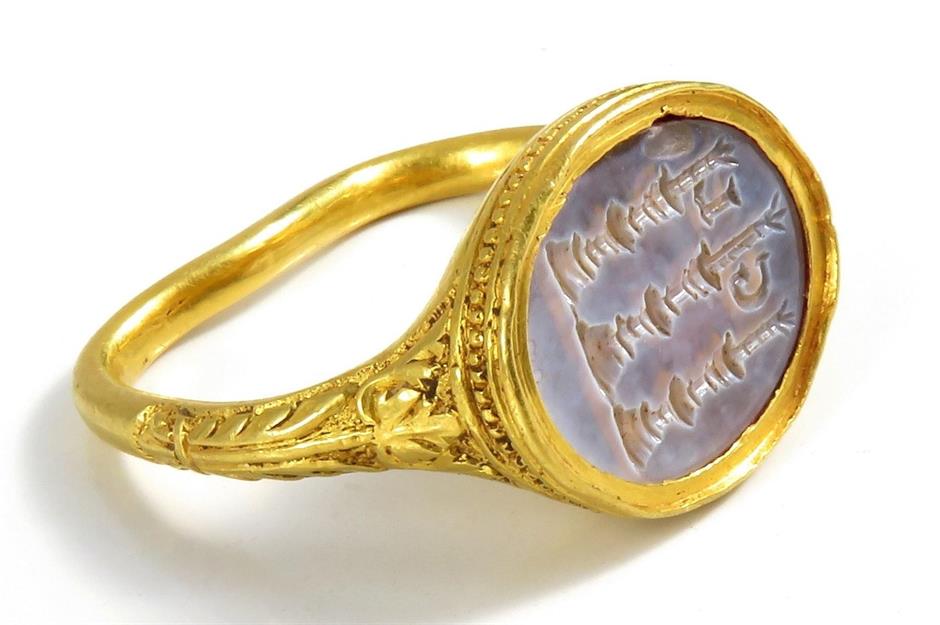
The magical thing about stumbling upon treasure is that it can happen to absolutely anyone, anywhere – even somewhere as ordinary as a local public park. From buried loot discovered by Boy Scouts to sparkling diamonds unearthed by tourists, read on to discover the most amazing treasures found in local and national parks around the world. All dollar amounts in US dollars.
The Utah treasure hunt
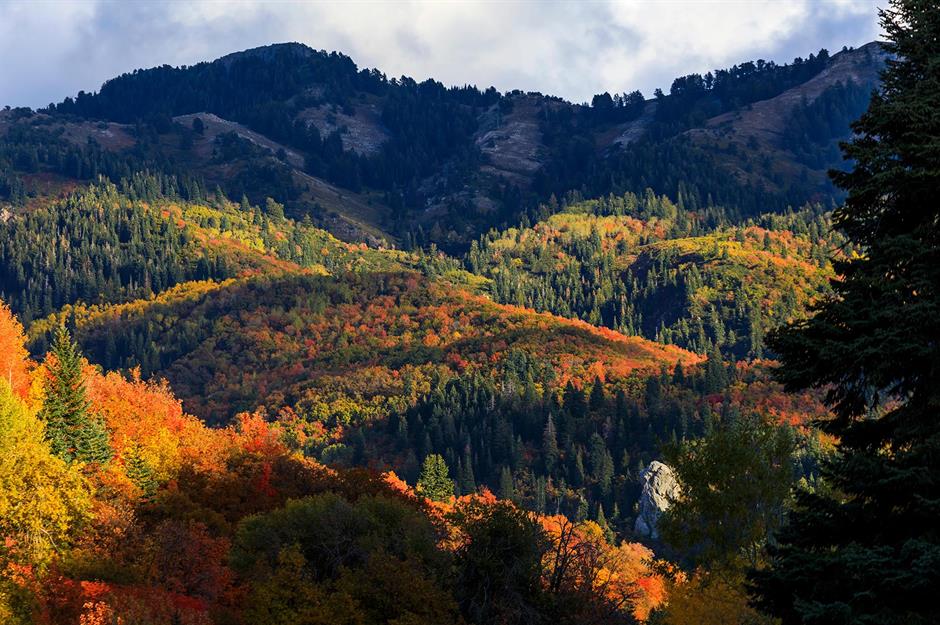
In July 2023, Chelsea Gotta from Iowa discovered a chest containing $25,000 (£19.7k) on the Mueller Park Trail in Bountiful, Utah. However, the discovery wasn’t a chance find. The booty had been buried by treasure hunt fans John Maxim and David Cline, and it was the fourth year they’d organised the fiendishly difficult-to-solve puzzle.
The first edition of the hunt took place in 2020 and a chest containing $5,000 was discovered in just four days. In 2023, a total of 51 days elapsed before Gotta found the haul under heaps of pine cone dust at the base of a tree. Gotta now plans to launch her own version of the treasure hunt with the cash.
The Amarillo Starlight diamond, Arkansas

Crater of Diamonds State Park in Arkansas is a one-of-a-kind tourist hotspot: it's one of just a handful of places in the world where members of the public can search for diamonds in their natural volcanic source. Since the site became a state park in 1972, over 33,000 diamonds of all shapes, sizes, and colours have been unearthed, with lucky visitors allowed to keep anything they find. So when W.W. Johnson of Amarillo, Texas found this 16.37-carat diamond in 1975, we can only imagine how delighted he was...
The stunning Amarillo Starlight (pictured in its rough state) is the largest diamond to have been unearthed at Crater of Diamonds since it became a state park. Named after Johnson's home city, the sparkly rock has since been cut to 7.54 carats and is estimated to be worth between $150,000 (£118k) and $175,000 (£138k).
Kinard Friendship Diamond, Arkansas
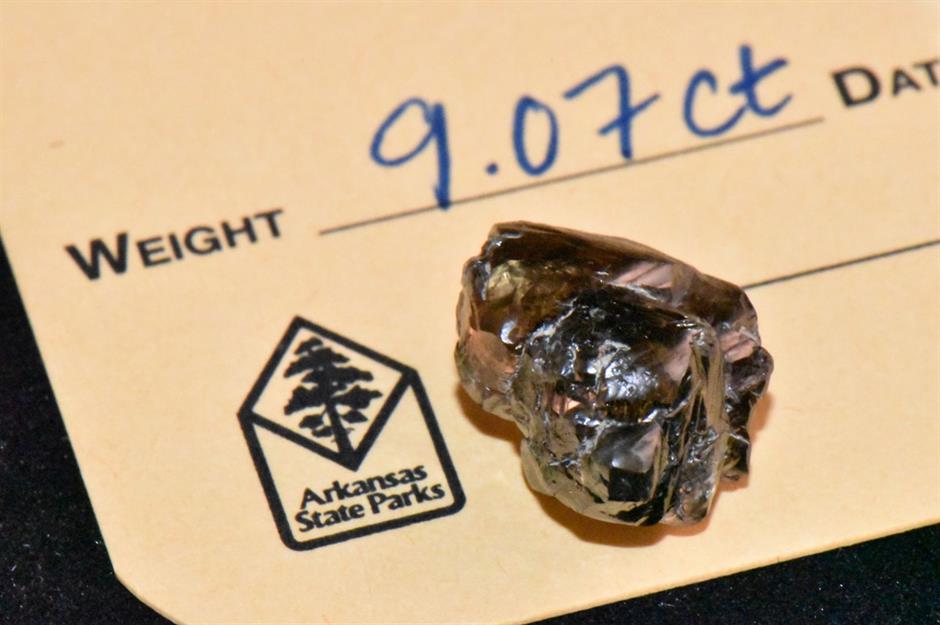
The jaw-dropping Amarillo Starlight isn’t the only incredible diamond that's been unearthed at the park. Bank manager Kevin Kinard has been visiting Crater of Diamonds regularly since childhood, but had never discovered any gems of his own. That all changed on Labor Day 2020 when he unearthed the second-largest diamond ever discovered at the site.
Kinard, aged 33 at the time, was hunting for diamonds with his friends when he pocketed a marble-sized rock (pictured), which he initially believed to be glass. He couldn’t have been more wrong: the sparkling stone was actually a 9.07-carat diamond in a "brandy brown" colour. Delighted with his find, he sweetly named his precious rock the Kinard Friendship Diamond to signify the adventure he’d shared with his buddies. The value of the diamond has not been confirmed.
Lucy's Diamond, Arkansas
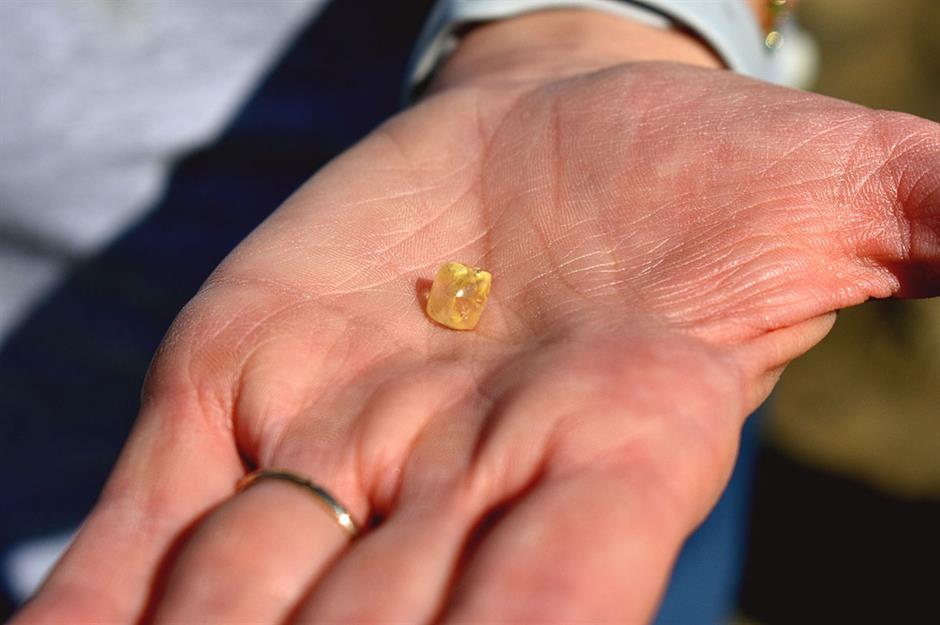
Johnson and Kinard aren’t the only diamond hunters to strike lucky at Crater of Diamonds. In September 2021, Noreen Wredberg visited the park for the first time with her husband, and was searching for diamonds when she spotted something glinting on the ground. To Wredberg's amazement, her diamond was the park's largest find of the year.
The 4.38-carat diamond (pictured) is about the size of a jellybean and has "a pear shape and a lemonade yellow colour", according to Park Superintendent Caleb Howell. The rock has been affectionately dubbed Lucy’s Diamond, in honour of the Wredberg family's cat. The park continues to yield precious gems to this day, and a seven-year-old girl celebrating her birthday at the site stumbled upon a 2.95-carat black diamond in September of this year.
The Secret treasure hunt, Chicago box
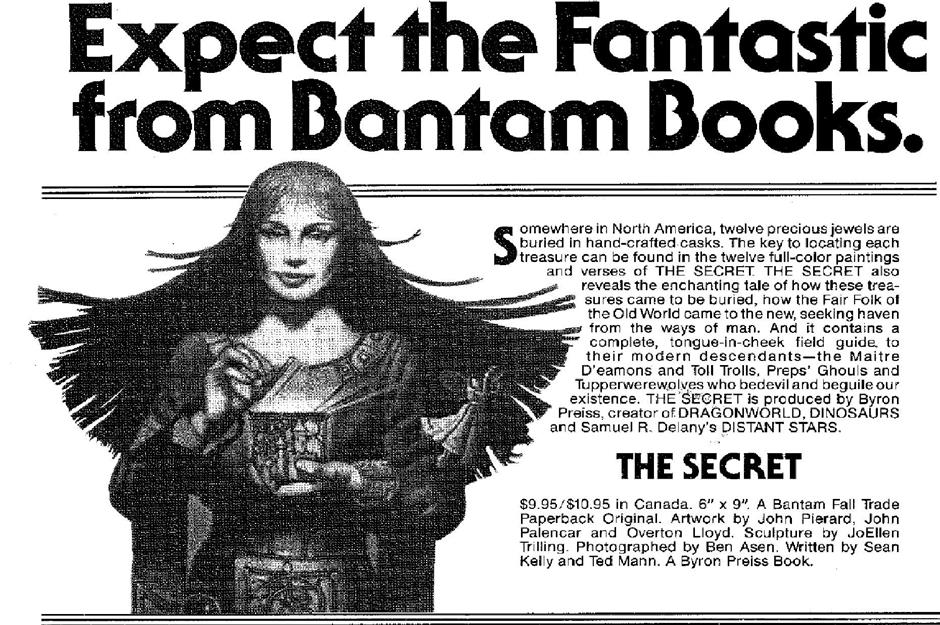
If you’re an Indiana Jones fan, then this could be the quest for you. In 1982, the late American writer Byron Preiss published his novel The Secret (pictured). His cryptic book provided both poetry and picture clues to the location of 12 boxes that Preiss had buried across the USA and Canada. Inside each box is a key, which can be traded for a gemstone valued at roughly $1,000. Preiss had expected his hunt to be fun and easy, but 40 years later just three of his fabled treasure chests have been found...
The first box was found by a group of teenagers in 1983. Rob Wrobel, then aged 19, and his friends followed the clues to a grassy area of Grant Park in Chicago, where they proceeded to dig "half a dozen holes", according to Wrobel. Confident that they had the right location but worried about digging too many holes in the park, the teens reached out to Preiss for help. He provided them with one final clue, which allowed the ecstatic treasure seekers to pinpoint the exact location of the treasure chest.
The Secret treasure hunt, Cleveland box
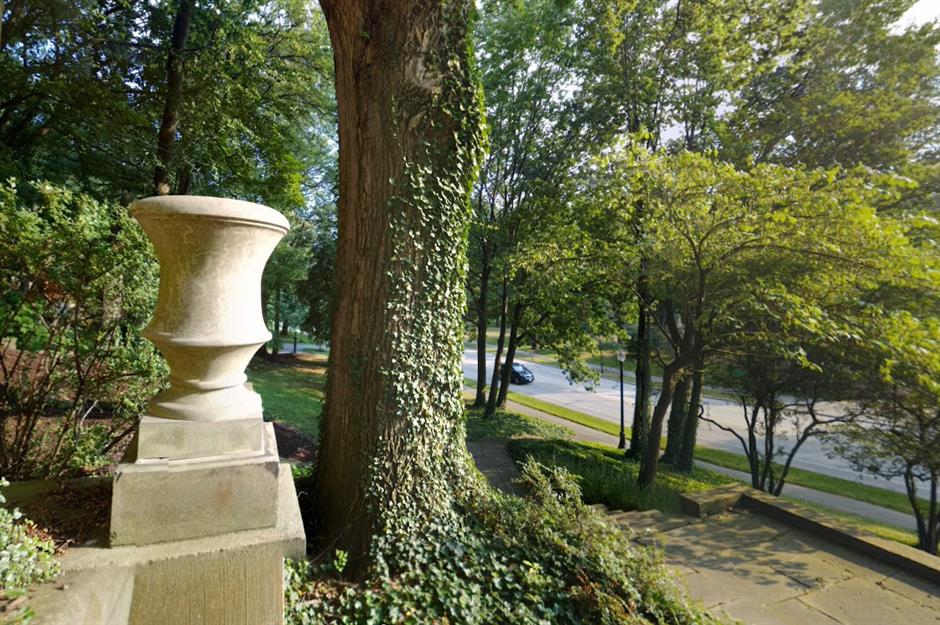
Incredibly, it would be more than 20 years before the second of Preiss’ treasure chests was discovered. Andy Abrams first learned about The Secret in 2002 while working at the same law firm as Brian Zinn. An avid treasure hunter, Zinn had been looking for the treasure since the 1980s. The two men decided to combine forces, and in 2004 their search led them to the Greek Garden (pictured) in the Cultural Gardens of Cleveland, Ohio.
Armed with maps and shovels, Abrams and Zinn pinpointed the exact location of the buried box and began to dig. Zinn (pictured) unearthed the coveted treasure box and, as promised, the duo exchanged the key inside for a valuable gem. Abrams, who was 40 years old at the time of the discovery, told Mysterious Writings that the experience made him "feel like a child all over again".
The Secret treasure hunt, Boston box
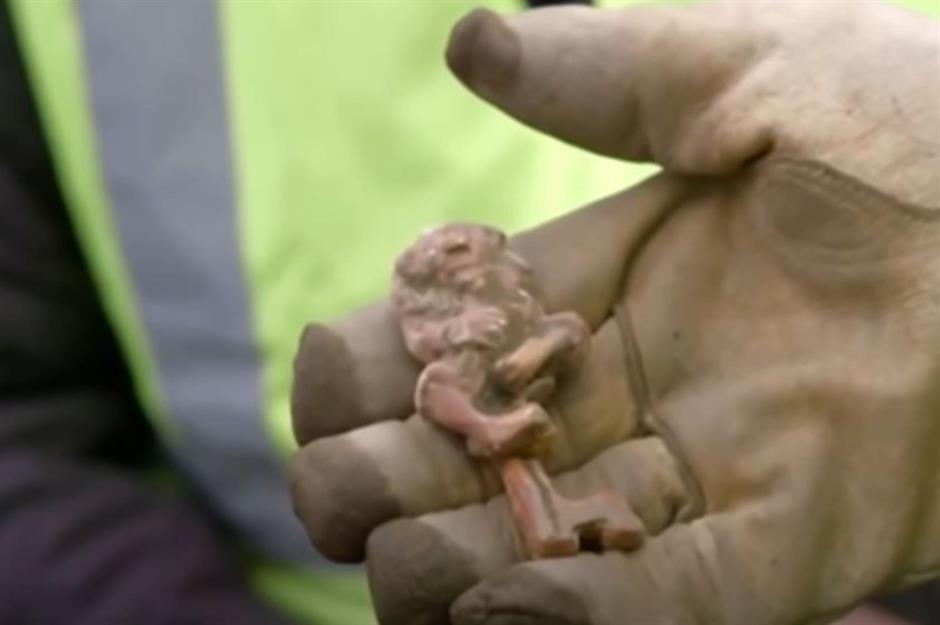
Another 15 years would pass before the third treasure box was found. Jason Krupat is a puzzle and game designer by trade, so The Secret was right up his street. Krupat and his family had long suspected that one of the fabled boxes was hidden in Boston's Langone Park. More specifically, they were convinced it was buried under the home plate of the softball field.
While jogging in Langone Park in 2019, Krupat was horrified to see construction workers digging up the area. Worried the treasure would be lost forever, he worked up the courage to tell the site foreman about his wild theory. At first they thought Krupat was crazy, but months later a construction worker found plexiglass and ceramic linked to The Secret by the home plate.
Krupat rushed to the site and uncovered the all-important key (pictured). Although Byron Preiss had died in 2005, Krupat and his family were still able to claim the reward. And the location of the remaining nine boxes? That’s a secret Preiss seemingly took to his grave…
Iron Age hoard, England
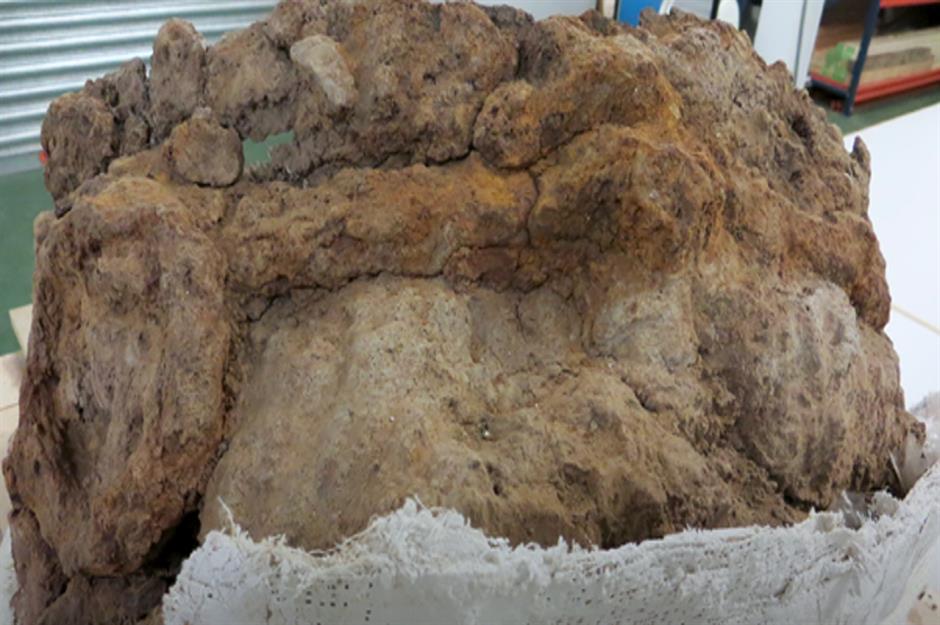
To England where, in 2013, a team of archaeologists from the University of Leicester set out to uncover the secrets of Glenfield Park. The site had once been an Iron Age settlement, and the team unearthed a rare collection of Iron Age artefacts during the excavation. This included 11 decorated cauldrons, a complete sword, a third-century BC brooch, and dress pins.
The most exciting find was a collection of cauldrons (one is pictured here), which are over 2,000 years old. The discovery of these ancient artefacts marked the only find of this type of cauldron in the East Midlands, as well as the most northerly discovery of such objects in mainland Britain. Experts believe these cauldrons would have been used as table centrepieces for large feasts and events.
Native American hoard, Baltimore
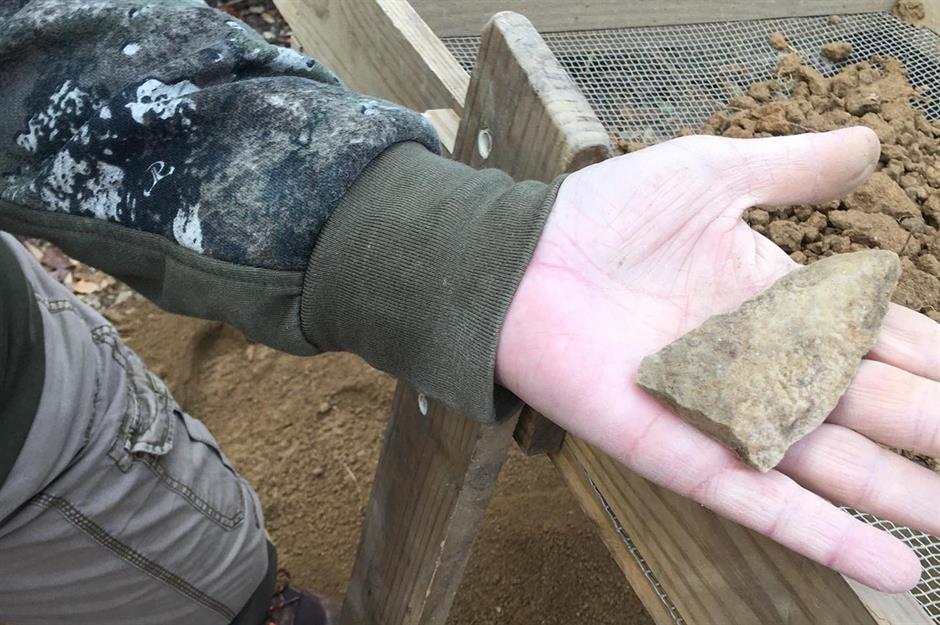
American archaeologists Lisa Kraus and Jason Shellenhamer founded the Herring Run Archaeology Project in 2014, and have been excavating the secrets of Baltimore's past ever since. Throughout their exploration of the woodland park, the husband-and-wife team have uncovered a trove of Native American artefacts, including projectile points, drills, and other stone tools crafted by Native Americans between 5,000 and 9,000 years ago. They’ve also unearthed items from the Woodland period, including lavishly decorated shards of pottery that back to around 3,000 years ago.
The artefacts are still being examined and tested in a bid to uncover more about Baltimore's history. It’s believed the area was once used as a seasonal hunting camp centuries before the first European settlers arrived.
Native American hoard, New York
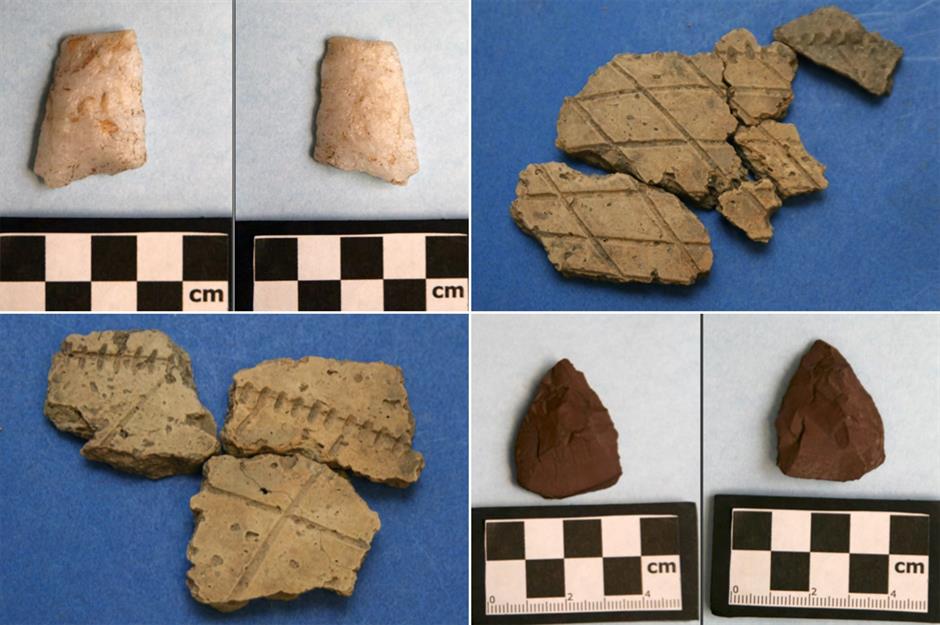
The Baltimore hoard isn’t the only trove of Native American treasure to be unearthed in a park. In 2015, construction workers renovating the southeast section of Pelham Bay Park in New York accidentally stumbled upon over 100 Native American artefacts, thought to be somewhere between 1,000-1,800 years old.
Among the items uncovered were ceramics, pottery, and stone tools (some pictured). Other Native American artefacts were discovered in the area in 2012, but nobody had anticipated such a remarkable trove would be found just three years later. According to reports at the time, experts described the 2015 haul as "one of the most important archaeological finds in New York City history".
Treasure discovered by Boy Scouts, West Virginia
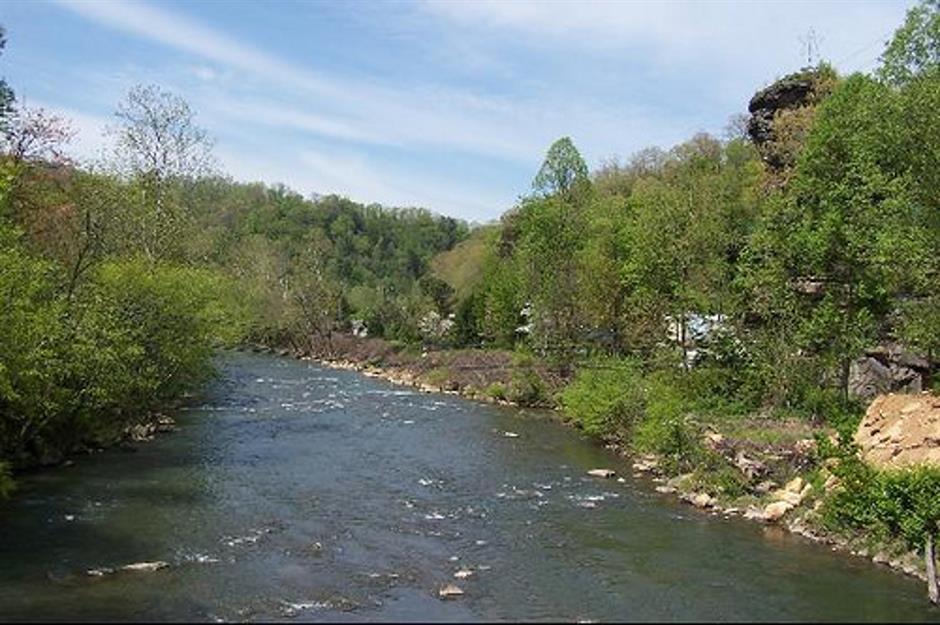
The beauty of buried treasure is that it can be uncovered by anyone – even those who aren't looking for it. Take, for example, the group of Boy Scouts who found buried treasure in a West Virginia park in 2017. Over 30 youngsters were busy constructing a footbridge in Guyandotte Park (pictured) when they unearthed a large wooden box. The box housed a range of interesting items, including campaign buttons from the early 1900s, old coins, and paper money.
It was a case of finders-keepers for the lucky Boy Scouts: a faded letter inside the box declared that whoever found the box got to keep its contents. The identity of who buried the box will likely remain a mystery forever.
400-year-old ring, Peak District, England
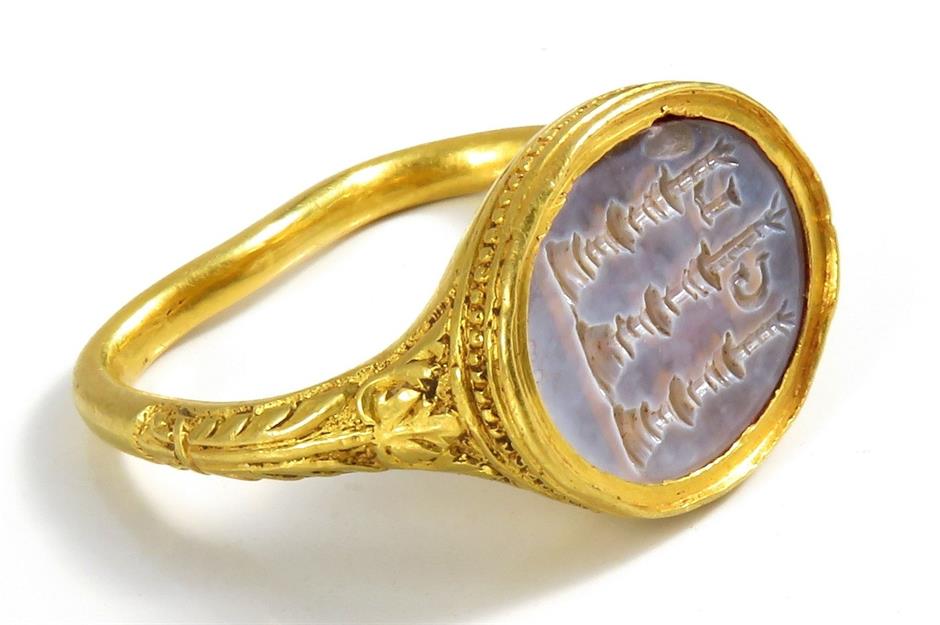
Armed with his metal detector, a retired fishmonger from Derbyshire, England uncovered buried treasure in the grounds of the Peak District's Castern Hall in February 2018. Speaking about his find, the unnamed 64-year-old said: "I got a strong signal and started digging down but hit a large, round, flat stone. When I lifted it up, I found the mammoth gemstone".
What he’d unearthed was a 400-year-old ring (pictured). Set with a purple-blue chalcedony stone, the ring is carved with the initials "GL" and depicts three candles. Dating back to around 1600-1650, family records suggest the first owner of the ring could possibly be Geoffrey Lowe, the former squire of St Mary’s Church in Denby, who died in 1637. The ring has been valued at between £25,000 ($31.7k) to £35,000 ($44.4k).
Fenn Treasure, Colorado and Utah border
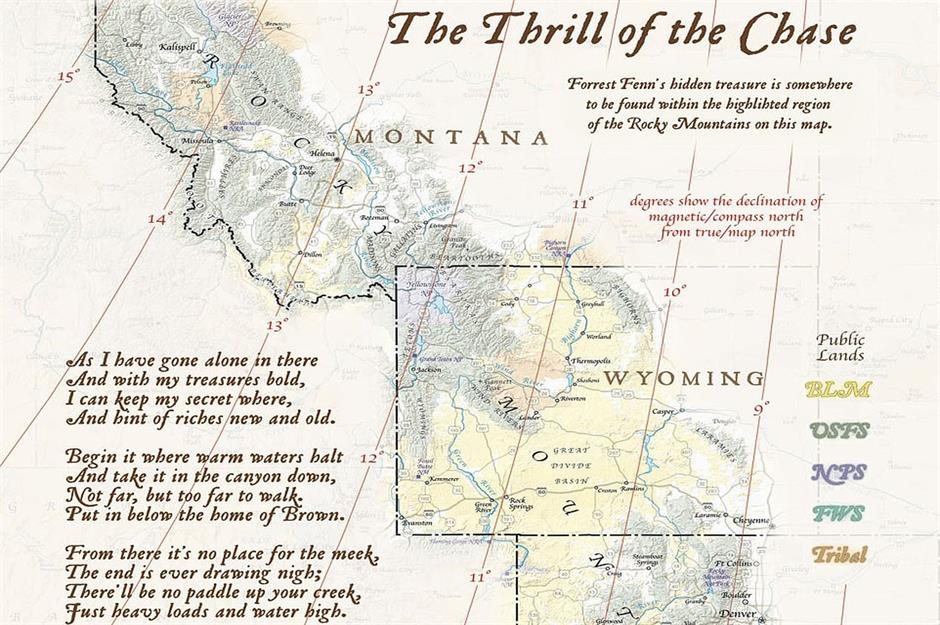
Byron Preiss wasn’t the only eccentric author to stash away treasure. In 2010, writer and art dealer Forrest Fenn published his memoir The Thrill of the Chase. In his book, Fenn claimed to have buried gold and gemstones worth $2 million (£1.6m) somewhere in the Rocky Mountains, north of Santa Fe, and in New Mexico, Colorado, Wyoming, or Montana. Fenn claimed a cryptic 24-line poem in his book was the key to finding his treasure. For a decade, sleuths sought high and low for Fenn’s fabled treasure trove, and tragically at least five people died in the process.
The hunt ended in 2020 when it was revealed medical student Jack Stuef had discovered Fenn's treasure. Aged 32 at the time, Stuef never revealed the exact location of the loot, although a lawsuit since filed by another treasure hunter suggests the haul was buried in Yellowstone National Park. Stuef said at the time that he planned to sell the items and pay off his student loans.
1,800-year-old coffins, Tel Aviv, Israel

In February 2021, two ancient stone coffins (one pictured) were discovered at a wildlife park near Tel Aviv, Israel. Believed to be 1,800 years old and thought to have once held the remains of a married couple, the limestone coffins date back to when the Roman Empire ruled the region. Experts believe the ornate decorations indicate the sarcophagi were made for non-Jewish people of high social status.
However, in a bizarre turn of events, staff at the Ramat Gan Safari Park claimed the coffins were actually unearthed 25 years ago during the construction of a car park. The ancient artefacts were then reportedly moved to another area of the park and were forgotten about. Fortunately, new construction work in the park meant that the coffins were rediscovered. It's thought the person who originally found them didn't appreciate their historical significance, and the coffins have since been transferred into the care of the Israel Antiquities Authority.
The Official Treasure Hunt, Santa Cruz
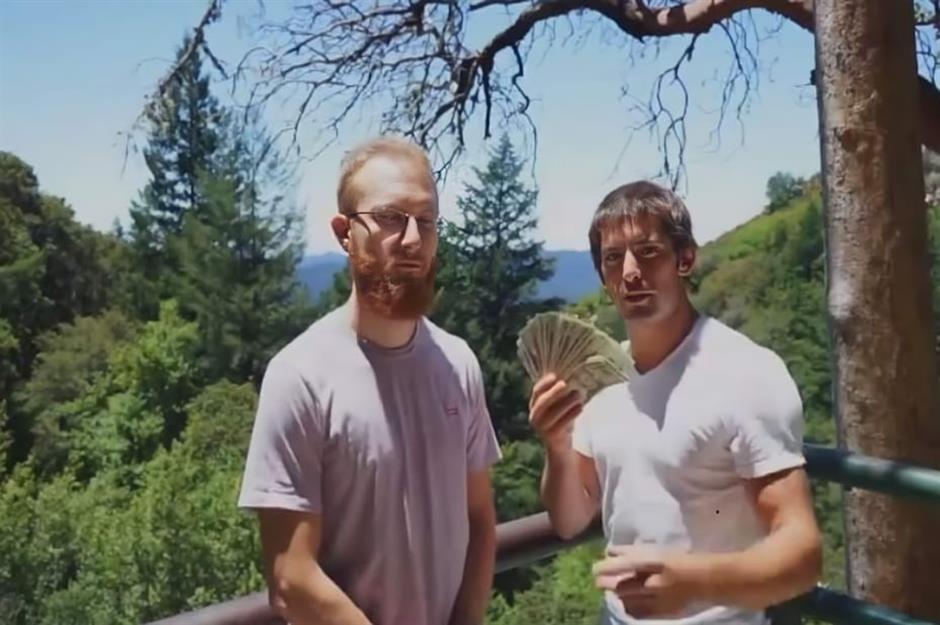
In the summer of 2021, adventure-loving buddies Joe Rattay and Brendan Ruh (pictured) launched @theofficaltreasurehunt on Instagram, and announced they had hidden a box containing $1,000 somewhere in the Santa Cruz mountains. Social media clues led treasure seekers to a wooded region of a Californian park – and while some believed the hunt was a hoax or publicity stunt for Ruh's recently launched business, the grand prize was eventually found.
Co-founder Ruh said, "After COVID kind of relaxed and people were starting to get outdoors again, we wanted to do something to get families outdoors and get them exploring these beautiful parks." All in all, the treasure hunt was such a success that Rattay and Ruh plan to do it again.
Ancient runes, Oslo, Norway
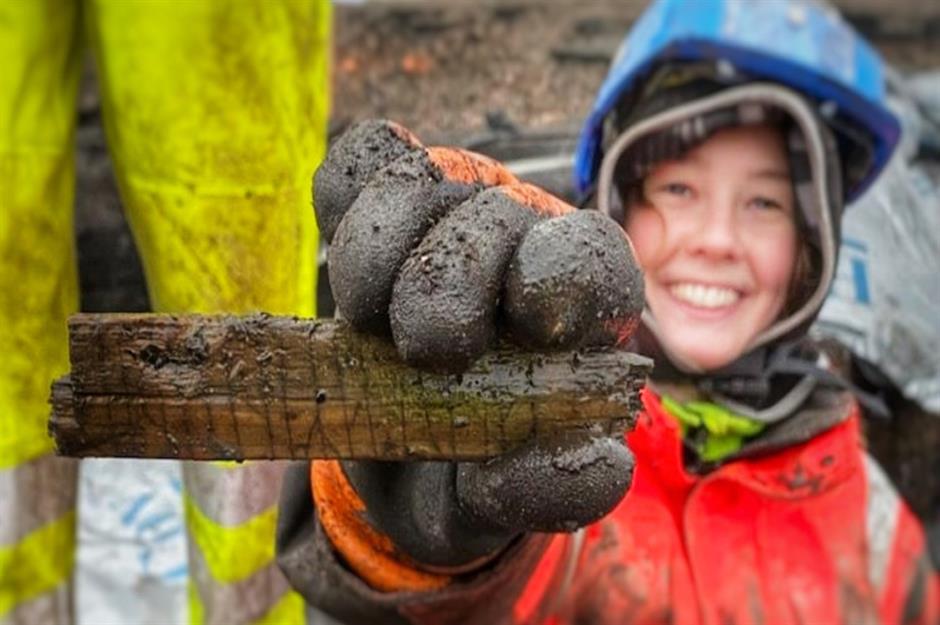
In January 2022, archaeologists excavating the Medieval Park in Oslo, Norway unearthed two incredible artefacts. The first was a bone fragment inscribed with 13 runes on one side and a single rune on the other. According to experts, the main inscription cryptically reads "basmarþærbæin", which could relate to either the owner of the bone or the type of bone. Another possible interpretation could be "boose (barn) goat’s bone", which could suggest animal ownership, although it could also relate to the Old Norse for "ram".
The second find was a flat piece of wood (pictured) inscribed on three sides with what's believed to be religious texts in both Latin and Norse. Similar finds in Norway have dated back to between 1100 and 1350.
World War I victory medal, Glasgow, Scotland
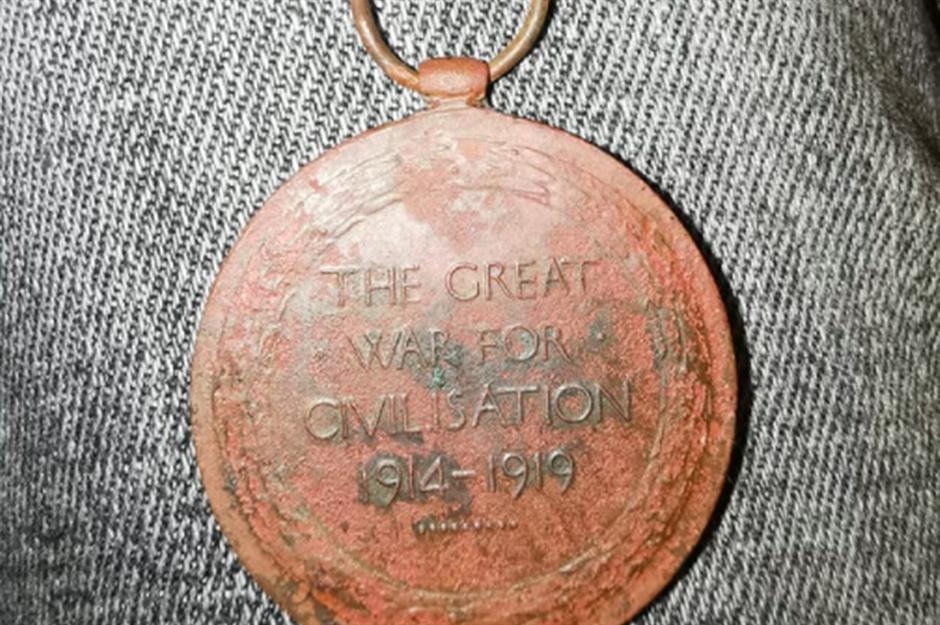
January 2022 also saw metal detectorist Andrew Wood find a World War I victory medal (pictured) while searching Kelvingrove Park in Glasgow, Scotland. The bronze medal bears the name of Thomas Porter, who Wood discovered served in the Royal Scots Corps between 1914 and 1920.
An avid detectorist, Wood has been exploring Glasgow for years and, remarkably, this medal isn’t the only incredible treasure he’s uncovered…
Coins and ring, Glasgow, Scotland
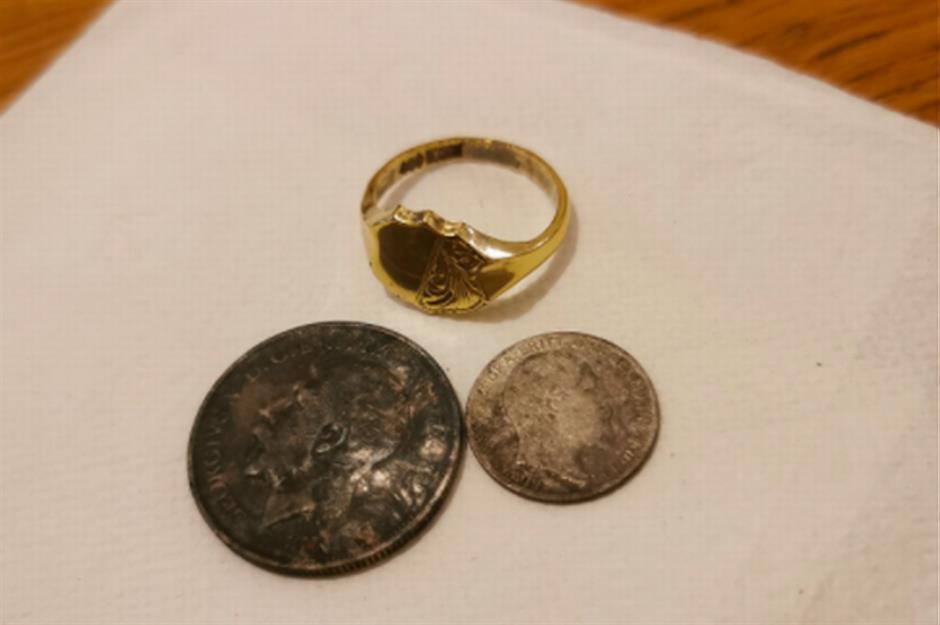
Two weeks before finding the medal, Wood was using his metal detector in Glasgow’s Queens Park when he located a gold ring and shilling coins (pictured) that were buried nine inches beneath the ground.
These incredible finds are just the tipping point. The oldest gold coin Wood has ever found dates back to 1857, and he also found a silver coin in Tollcross Park that dates back to 1816. Speaking of his passion for metal detecting, he told Glasgow Live: "It’s a thrill. I’m interested in history and things from the past".
Now discover the world's most valuable metal detector finds
Comments
Be the first to comment
Do you want to comment on this article? You need to be signed in for this feature